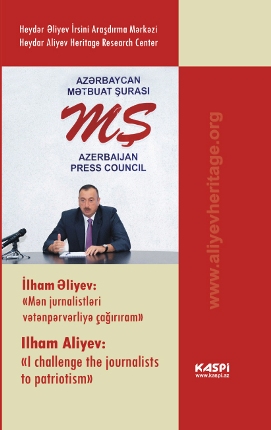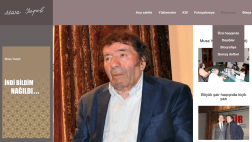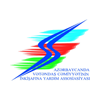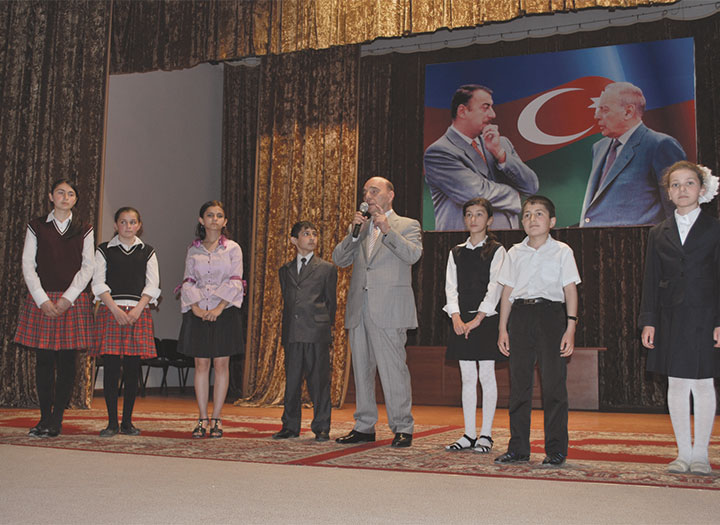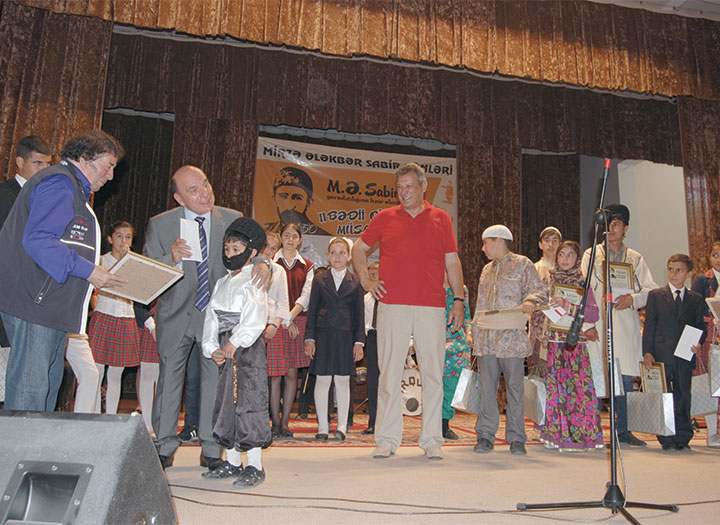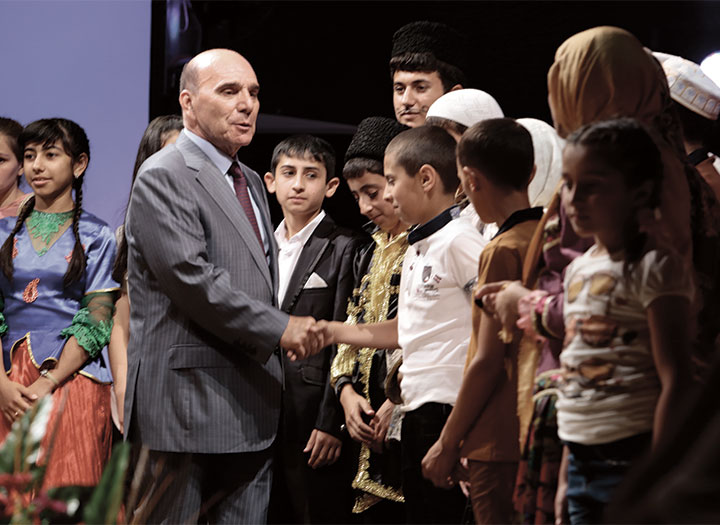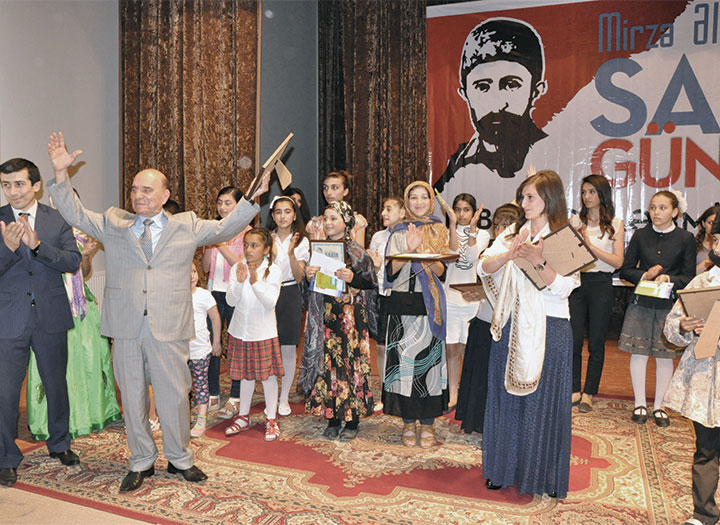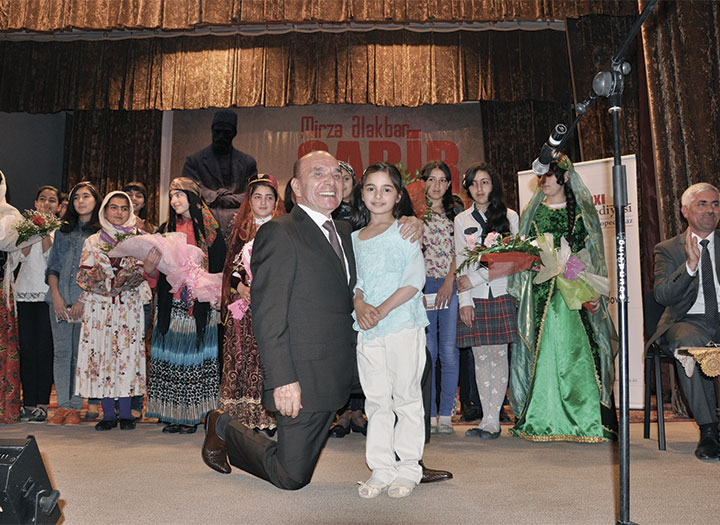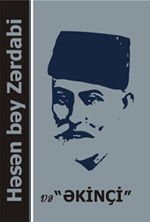I. Introduction
1. Meeting in Vienna on 9 and 10 December 1986, the ministers taking part in the 1st European Ministerial Conference on Mass Media Policy adopted a declaration in which they decided “to assign the highest priority (…) to the rapid preparation, within the Council of Europe framework, of binding legal instruments on certain crucial aspects of transfrontier broadcasting”.
2. In the same declaration, they also urged the Committee of Ministers of the Council of Europe to “provide the appropriate means for preventing or solving possible conflicts caused by the transfrontier development of the mass media”.
3. Subsequent to the adoption of the aforementioned declaration, the Committee of Ministers, at the 403rd meeting of the Ministers’ Deputies, in January 1987, instructed the Steering Committee on the Mass Media (CDMM):
“to assign the highest priority to the elaboration of a binding legal instrument embodying the major principles which should govern transfrontier broadcasting, bearing in mind the existing Council of Europe recommendations concerning the media, and to submit the text of such a draft instrument without delay to the Committee of Ministers”.
4. The Committee of Ministers also instructed the CDMM to propose, in the context of its work on a binding legal instrument, “the appropriate means for preventing or solving possible conflicts caused by the transfrontier development of the media”.
5. In accordance with these instructions, the CDMM undertook the elaboration of the binding legal instrument requested at its 14th to 17th meetings (March to December 1987). It was assisted in this work by a drafting group (CDMM-GR) which held six meetings (April to December 1987). In addition, the Committee of Legal Experts in the Media Field (MM-JU), a subordinate body of the CDMM, held a special meeting in May 1987 to advise the CDMM on the inclusion of certain legal questions within the scope of the draft instrument.
6. During its work, the CDMM took into account, inter alia, that:
– the ministers participating in the European Ministerial Conference on Mass Media Policy had stressed the highest priority they attached to the rapid preparation of binding legal instruments in the field;
– in the final communiqué of the 80th Session of the Committee of Ministers (6-7 May 1987), the ministers “took cognizance with great interest of the texts adopted by the European Ministerial Conference on Mass Media Policy (Vienna, 9-10 December 1986). They noted with satisfaction that preparation of a draft for a binding legal instrument was in hand (…). They expressed the hope that preparation of the draft can be completed before the next ministerial conference which will be taking place in Stockholm in late 1988” (paragraph 13 of the final communiqué);
– it had, itself, been mandated to submit the text of a draft binding legal instrument without delay to the Committee of Ministers;
– the Parliamentary Assembly, in Recommendation 1067 (1987) adopted on 8 October 1987, recommended that the Committee of Ministers “finalise and open for signature early in 1988 a binding legal instrument on basic standards for transfrontier broadcasting by both public and private bodies, with a view to the possibility of its entering into force before the 2nd European Ministerial Conference on Mass Media Policy, in Stockholm, in November 1988, and set up an effective mechanism (including the representation of broadcasting bodies) to monitor the implementation of this instrument”.
7. The CDMM also organised a hearing with representatives of the following bodies: World Federation of Advertisers (WFA), European Advertising Tripartite (EAT), European Association of Advertising Agencies (EAAA), European Office of Consumers Unions (BEUC), European Trade Union Confederation (ETUC), Union of Industries of the European Communities (UNICE), Joint Committee of the International Federation of Actors, International Federation of Musicians and International Federation of Audiovisual Workers’ Unions (FFF), International Federation of Journalists (FIJ), International Federation of Film Producers’ Associations (FIAPF), International Federation of Associations of Film Distributors (FIAD), Committee of the Cinematographic Industries of the European Community (CICCE), International Federation of Newspaper Publishers (FIEJ), International Federation of Periodical Press (FIPP), European Institute for the Media (EIM), International Institute of Communications (IIC), Fininvest, Bundesverband Kabel und Satellite BV, European Group of Television Advertising (EGTA), Super Channel.
8. At its 17th meeting (December 1987), the CDMM transmitted the text of a draft convention to the Committee of Ministers with a view to obtaining guidance on a number of outstanding issues before the text of the draft convention could be finalised. It was in this context that an informal meeting of European Ministers responsible for Mass Media Policy took place in Vienna on 12 and 13 April 1988, at the invitation of the Austrian Government. The purpose of the meeting was to seek solutions to the outstanding issues in the draft convention.
9. On the basis of the guidelines emerging from this informal meeting, the CDMM finalised the text of the draft European Convention on Transfrontier Television and draft Explanatory Report at a meeting held from 24 to 27 May and 6 to 10 June 1988 and transmitted these texts to the Committee of Ministers.
10. Following discussions on the draft Convention at the 419th, 420th and 421st meetings of the Ministers’ Deputies (September, October and November 1988), the 2nd European Ministerial Conference on Mass Media Policy, held in Stockholm on 23 and 24 November 1988, examined a communication on the draft Convention and agreed to transmit to the Committee of Ministers a package of proposals on the final outstanding issues with a view to the rapid finalisation, adoption and opening for signature of the text.
11. The Committee of Ministers adopted the text of the Convention on 15 March 1989. It was opened for signature by member States of the Council of Europe and the other States Party to the European Cultural Convention, as well as the European Community, on 5 May 1989.
II. Background
12. Announcements made by several European countries and groups of countries in the early 1980s about their intention to introduce direct broadcasting by satellite (DBS) led to intergovernmental consultations in the Council of Europe and to the establishment of an action plan.
13. The Parliamentary Assembly expressed its interest in this question in Recommendation 926 (1981) on questions raised by cable television and direct satellite broadcasts. Following a proposal by the Government of the Federal Republic of Germany, the Committee of Ministers, at its 70th Session (April 1982), instructed its Deputies to prepare an opinion on the possibility of concluding a legal instrument in this field. In November 1982, following extensive legal discussions, a report of the CDMM was presented to the 71st Session of the Committee of Ministers. It concluded that a legal instrument was not only possible but also urgent, stressing that closer co-operation between the Council of Europe’s member States would help to enhance the positive aspects of DBS and to prevent or attenuate possible negative effects.
14. Following this report, the Committee of Ministers instructed its Deputies to continue work in this field as a matter of urgency, with a view to drawing up recommendations to governments.
15. In February 1983, the CDMM adopted an action plan on satellite broadcasting, giving effect to the decision of the ministers. It noted that, in addition to direct broadcasting by satellite, use was already being made of communications satellites for the transmission of programmes from one country for distribution in another. This new application underlined the necessity for early action. For the implementation of this plan, the CDMM and its subordinate committees held regular exchanges of views on developments in member States in the media field, and, in particular, on the political, economic, cultural, technical and legal aspects of them. Likewise, exchanges of information on the technological aspects of the media, particularly as regards technical standards (transmission, distribution and reception) were held. Finally, the CDMM and its subordinate committees gathered, in the course of their work, the views of other interested organisations by holding hearings with their representatives (organisations representing consumers, advertisers, the press, rights holders, social partners, etc.).
16. The work conducted under the action plan led, inter alia, to the adoption by the Committee of Ministers of the following recommendations to member States:
– Recommendation No. R (84) 3 of 23 February 1984 on principles on television advertising;
– Recommendation No. R (84) 22 of 7 December 1984 on the use of satellite capacity for television and sound radio;
– Recommendation No. R (86) 2 of 14 February 1986 on principles relating to copyright law questions in the field of television by satellite and cable;
– Recommendation No. R (86) 3 of 14 February 1986 on the promotion of audiovisual production in Europe.
17. Concurrently with this work, in January 1984, at the 366th meeting of the Ministers’ Deputies, the Committee of Ministers decided to broaden the CDMM’s remit, in particular to ensure that it could “act as a platform for exchanges of information and views for discussions between the member States on developments in the field of satellite broadcasting which could have an impact on the media situation in several European countries”. This decision was motivated by the fact that, whilst the action plan was to be completed within a limited period of time, developments in the field were likely to have a profound effect on member States’ broadcasting policies and arrangements for some time to come.
18. Furthermore, the European Ministers responsible for Cultural Affairs, taking part in their 4th Conference in Berlin in May 1984, in their Resolution No. 1 on culture and communications technology, appealed to the Committee of Ministers to consider convening a European conference “in order to define a comprehensive policy on the media”.
19. Following consideration of the opinions of the CDMM and the Council for Cultural Co-operation (CDCC) on the advisability and scope of such a conference, the Committee of Ministers decided, at the 389th meeting of the Ministers’ Deputies (October 1985), to entrust the preparation of the 1st European Ministerial Conference on Mass Media Policy to the CDMM, on the topic of “the future of television in Europe” and dealing respectively with the promotion of European audiovisual works and public and private broadcasting in Europe.
20. The conference took place in Vienna on 9 and 10 December 1986 at the invitation of the Austrian Government.
III. Reasons for the elaboration of the original Convention
21. Fundamental changes in the European broadcasting landscape were being brought about by large-scale technical developments in the field of information and communication.
22. The use of a variety of new transmission techniques, in particular for television programme services, was radically transforming the traditional concept of television in Europe. For many years characterised by relatively restricted technical capacity, television programme services available in individual European countries had been limited in number and could, except in certain small countries and frontier regions, rarely be received by viewers in other countries. This was no longer the case with the widespread use of communications satellites (fixed satellite service – FSS) and wide-band cable systems, as well as similar devices, for the transmission of television programme services; the introduction by European countries of services via direct broadcasting satellites (DBS) and new intermediate satellites, together with trends in generalising individual and community reception from FSS and the commercialisation of the relevant reception equipment, were likewise contributing to the change in the traditional concept of television programme services.
23. Two major consequences of these developments were, firstly, the increasingly transfrontier character of the services transmitted: it had become possible to receive the same service, with the appropriate transmission and reception equipment, in many European countries and the introduction of services via DBS and certain intermediate satellites resulted in the fact that the same service could be received throughout and beyond the circle of member States of the Council of Europe; secondly, due to the abundance of technical capacity, the number of transmission channels available was expected to become almost unlimited, thereby leading to the multiplication of programme services and competition between them.
24. Whilst it was realised that these developments might open up previously unexplored horizons to the public and offer it a considerable increase in choice, as well as provide new opportunities for cultural expression, international communication and contacts between nations, it was thought that they also carried with them a number of inherent challenges, inter alia, as regards national media structures and the fundamental functions of broadcasting, the maintenance and development of European cultural identities and the interest of the public to receive a full-range, high-quality service which contributes as a whole to the free formation of opinions and the development of culture.
25. Given the risk that increased international competition between the new services which were developing in Europe could induce a purely market approach to broadcasting and a general lowering of standards to the detriment of the effective choice of the public, the public service concept of broadcasting (whether publicly or privately organised) and Europe’s cultural heritage were at the heart of concerns in those days about the development of transfrontier broadcasting in Europe.
26. The member States of the Council of Europe, attached as they are to the fundamental principles of freedom of expression and information contained in Article 10 of the European Convention for the Protection of Human Rights and Fundamental Freedoms (1950 – hereinafter referred to as the “European Convention on Human Rights”), and the free flow of information and ideas, as an indispensable basis for their media policies, welcomed the positive opportunities brought about by the developments which had already taken place in those days and future developments in television broadcasting in Europe and were determined that these opportunities should be seized in the best possible conditions and that the potential risks should be obviated to the greatest possible extent. However, the magnitude and complexity of those developments were considered to be such that they required a common response from the member States of the Council of Europe.
27. All these points were, moreover, analysed in some depth in Resolution No. 2 and the Declaration adopted by the 1st European Ministerial Conference on Mass Media Policy and those texts constituted the framework within which the drafting of the Convention was undertaken.
IV. Main features of the original Convention
28. The objective pursued by the member States in elaborating the Convention was to strengthen the free exchange of information and ideas by encouraging the transfrontier circulation of television programme services on the basis of a number of commonly agreed basic standards.
29. Those standards were designed to ensure that the unhindered transfrontier circulation of television programme services promotes certain fundamental values common to the member States, in particular the pluralism of ideas and opinions, and does not prejudice free circulation at national level, within individual member States.
30. Since the Convention seeks to elaborate a framework within which the transfrontier transmission of television programme services is to be encouraged, its purpose is not to regulate broadcasting activities per se, nor to impinge upon the domestic broadcasting policies and arrangements of the Parties. These remain for the Parties to determine, in the light of their individual political, legal, cultural, social and other traditions. Nor does the Convention seek to impinge upon the responsibility and independence of the broadcaster in programming matters. It follows, therefore, that certain aspects of broadcasting fall outside the purview of the Convention.
31. The Convention, in effect, represents a common basic standard for the harmonious development of transfrontier television programme services and confirms the guarantee of freedom of reception and establishes the principle of non-restriction of the retransmission of programme services conforming to that standard.
32. It follows from the above that Parties remain free to apply stricter or more detailed rules than those laid down in the Convention to programme services transmitted by entities or by technical means within their jurisdiction (see below, paragraphs 127, 365 and 366).
33. The areas in which the Convention establishes common basic standards are what the 1st European Ministerial Conference on Mass Media Policy qualified as “crucial aspects” of transfrontier television broadcasting:
– the protection of certain individual rights;
– the responsibility of the broadcaster in maintaining programme standards;
– advertising;
– sponsorship.
34. Recognising that transfrontier television broadcasting in Europe may be subject to rapid changes brought about by future technical developments, the authors of the Convention attempted to elaborate provisions which would stand up to such changes and yet which would carry the necessary degree of precision and rigour to be enforceable.
35. The Convention nevertheless embodies provisions enabling its amendment in the light of the experience gained from its implementation and of technical developments in the field.
36. Given the variety of situations that may arise, particularly as a result of the transmission of television programme services via satellite, the authors of the Convention sought to clarify the responsibilities of the Parties in respect of the conformity with the Convention of programme services transmitted or retransmitted by entities or by technical means within their jurisdiction.
37. The Convention lays emphasis on the notion of co-operation for the implementation of its provisions: mutual assistance between the Parties on specific issues; friendly settlement of any difficulty in the application of the instrument at bi- or multilateral level between the Parties directly concerned and in a Standing Committee, composed of the Parties, and responsible for following the application of the Convention.
38. Provision was nonetheless made for arbitration, should it prove impossible to reach a friendly settlement through the channels referred to above.
IVa. Reasons for the elaboration of an amending Protocol
39. Since the entry into force of the Convention on 1 May 1993, the Standing Committee on Transfrontier Television which was established in June 1993 under Article 20 of the Convention has been monitoring the implementation of the Convention by the Parties, discussing the difficulties related to the implementation of the Convention and has formulated Opinions on the interpretation of the provisions of the Convention. It has also monitored the economic, technological and political developments which have taken place since 1989. One of the major relevant political developments was the revision of the “Television without Frontiers” Directive in the framework of the European Community, since the Convention, at the time of its preparation, had been negotiated in parallel with the drafting of this Directive. Therefore, the Standing Committee felt that it was necessary to examine whether the Convention should be amended so as to maintain a coherence with the revised Directive, in the interest of legal certainty of both States and transfrontier broadcasters.
40. As a result of this examination, the Standing Committee in general stressed the importance of preserving the coherence of legal rules for transfrontier television in order to facilitate the transfrontier circulation of television programmes. Therefore, it has been one of the main objectives of the amendment of the Convention to ensure its realignment with the revised Directive. Accepting several fundamental differences resulting from the different characters of both legal instruments (the Convention, for example, applies exclusively to transfrontier television while the Directive does not) the Standing Committee intended to safeguard coherence of at least those rules of both instruments which may apply to broadcasters under the jurisdiction of a Party to the Convention and of a Member State of the European Community at the same time. This intention will be taken into account by the Standing Committee in future cases of interpretation of the amended Convention.
IVb. Main features of the amending Protocol
41. In the course of the revision process, the Standing Committee considered the following areas and came to the following conclusions:
a. The possible inclusion of communication services operating on individual demand in the scope of the Convention
42. It was concluded that a large majority of the Parties was against the inclusion of such services in a revised Convention, mainly for the following reasons: the Convention’s underlying philosophy and assumptions were inappropriate for dealing with these services; the rapidity of technological change, including the evolution of Internet services; communication services operating on individual demand were still at the embryonic stage of development; the global dimensions of the issues raised.
43. Furthermore, it was noted that the exclusion of communication services operating on individual demand from the scope of an amended Convention was consistent with the approach followed in the revised Directive.
44. Therefore, the Standing Committee decided not to deal with these services within the framework of the amending Protocol.
45. At the same time, the Standing Committee concluded that the exclusion of communication services operating on individual demand from the scope of a revised Convention did not mean that they should operate in a legal vacuum. It was noted that these services raised, inter alia, content problems similar to those which needed to be addressed in the context of traditional programme services, and in particular violence, racism, pornography and other matters of public interest.
46. In this connection, the Standing Committee noted that new communications services were addressed at the 5th European Ministerial Conference on Mass Media Policy (Thessaloniki, 1997) and that the participating Ministers responsible for national media policies decided to include these services in their Political Declaration containing an “Action Plan for the promotion of freedom of expression and information at the pan-European level within the framework of the Information Society” as well as in their Resolution No. 1 on “The impact of new communications technologies on human rights and democratic values”.
47. According to the Political Declaration, the introduction of new technologies and new communications and information services, in particular on-line services, as a result of digitisation and the prospects for progressive disappearance of technological boundaries between broadcasting, telecommunications and informatics, will lead to the development of the Information Society, which may require a new approach concerning the regulation of the media sector.
b. The timeframe for the broadcasting of cinematographic works
48. The Standing Committee decided that the point of departure should be contractual freedom and thus to align the Convention on this issue with the revised Directive.
c. The definition of advertising and the issue of self-promotion
49. The Committee noted that self-promotion had already been dealt with in part in the Explanatory Report to the original Convention. Nevertheless, a grey zone existed since it was not always easy to determine whether a given message from a broadcaster concerning, for example, the announcement of forthcoming programmes was primarily aimed at informing the public or at self-promotion of the broadcaster.
50. As regards the definition of self-promotion, the Committee decided to amend Article 2 (f) to include self-promotion in the concept of advertising.
51. The Committee considered at the same time that the provisions of Article 12 (duration of advertising) should not apply to non-profit announcements in the public interest and to charity appeals broadcast free of charge (see paragraphs 104 and 227 below). Similarly, it was felt that Article 12, as specified in paragraph 4, first indent (see paragraph 103 below) should not apply to broadcasters’ messages concerning their own programmes and associated products directly derived from these programmes.
52. Furthermore, the Committee decided to add in the Convention a new Article 18a concerning programme services devoted exclusively to self-promotion (see paragraphs 293 and 294 below).
d. Tele-shopping
53. The Standing Committee agreed to align the Convention on this issue with the approach taken in the revised Directive, namely that tele-shopping and advertising, although they have certain similarities should be treated separately.
54. It should be noted that the notion of tele-shopping includes:
– tele-shopping spots which are similar to advertising spots;
– tele-shopping programmes (broadcast within programme services not exclusively devoted to tele-shopping, especially in the form of isolated programmes or tele-shopping windows); and,
– programme services exclusively devoted to tele-shopping, which are dealt with especially in Article 18b of the Convention.
e. The limitation of advertising and tele-shopping spots
55. In the original Convention, the criterion of a given one-hour period was used to avoid an excessive concentration of advertising spots by limiting their amount to 20% within a given one hour period.
56. In the revision process, two possible interpretations were identified for the calculation of a given one-hour period: the sliding hour and the clock-hour. Although the sliding hour criterion is the option which most limits the possibilities for concentrating advertising at prime time, its calculation is complex (under the sliding hour criterion, the “given one hour period” could begin, for example, at 7.07 pm and end at 8.07 pm). On the other hand, the clock-hour criterion is much simpler to calculate: for example, it is only necessary to examine whether or not the 20% limit had or had not been exceeded between 7.00 pm and 8.00 pm. Therefore, the criterion of the clock-hour was retained. This is the approach which is also taken in the framework of the revised Directive.
f. Programme sponsorship
57. The Standing Committee also decided to align the Convention’s definition of “Sponsorship” with that of the revised Directive.
58. The Committee agreed to supplement the definition of sponsorship by indicating that it also includes the promotion of the sponsor’s activities. It was agreed that the sponsor should have the possibility of choosing the most appropriate form of promotion so as to be identified easily by the public (reference to the company name or the name of one of its most well-known products, etc). In no circumstances, however, should the identification of the sponsor contain specific promotional elements (encouragement to purchase, references to the quality or the effectiveness of the product, etc).
59. Furthermore, the Committee decided that the sponsoring of broadcasts by pharmaceutical companies whose main activity consisted in the manufacture or sale of medicines available only on medical prescription, could be authorised and therefore decided to amend the text of the original Convention accordingly (see paragraph 290 below).
g. Jurisdiction
60. In order to ensure a coherent approach to the regulation of transfrontier television programme services at the European level and, in particular, to avoid possible problems in determining the competence of States with regard to such services, the criteria concerning jurisdiction which appeared in the original text of the Convention were revised so as to be consistent with those of the revised Directive.
61. The establishment criterion was chosen as the primary criterion for determining the jurisdiction of a particular contracting Party.
h. Abuse of rights granted by the Convention and advertising directed specifically at a single Party
62. This issue concerns the situation in which broadcasting organisations as part of a deliberate strategy place themselves outside the jurisdiction of one contracting Party and set up operations in another contracting Party in order to direct all or a substantial amount of their programme services towards the territory of the latter thus avoiding the rules which would have applied to them under the Convention in that Party (see paragraph 334 below). It was decided to include a special provision in the Convention to deal with this issue (Article 24a, see paragraphs 332 and further below).
63. The issue of advertising directed specifically to a single Party which is related to that of abuse of rights, was analysed by the Standing Committee in its Opinion No. 2 (1994) on the notion of “retransmission”. Although the possible deletion of Article 16 concerning advertising directed specifically at a single Party was considered, it followed from the analysis that the issue remained important for the contracting Parties and that the way in which the issue was dealt with by the Convention prevented the emergence of distortion in competition between national broadcasters and foreign broadcasters and enabled the countries with a limited linguistic coverage to face competition from broadcasters in the larger countries sharing the same language. In addition, experience had shown that the provision included in the Convention on this issue had been successfully invoked in concrete cases which might not have been resolved on the basis of the abuse of rights’ criteria.
i. Access by the public to information
64. The question of the right to information and the issue of exclusive rights to major events was already discussed at the end of the 80s. Those discussions resulted in the adoption of Article 9 of the original Convention and Recommendation No. R (91) 5 on the right to short reporting on major events where exclusive rights for their television broadcast have been acquired in a transfrontier context.
65. Since then, the issue of exclusive rights has assumed an ever increasing importance in Europe. The Standing Committee noted that there were in Europe concrete cases where the public in a country had been deprived of images (or commentaries adapted to its national sensitivity and in its own language(s)) of a major event by virtue of the fact that a foreign broadcaster had acquired exclusive rights to the event for a particular geographical zone which included the country in question.
66. In addition, there are examples of broadcasters of pay TV services having acquired exclusive rights to major events in order to broadcast these events in an encrypted format to those members of the public who are willing and able to subscribe to their services or to pay a certain fee on a case by case basis in order to be able to watch the event.
67. The Standing Committee considered that this problem was a complex one, especially since property rights and the principle of contractual freedom needed to be taken into account when identifying possible solutions at the European level. Discussing the possible amendment of Article 9 of the Convention, the Standing Committee had to take into account all the developments which took place since Article 9 had been drafted (for example, the adoption of the above-mentioned 1991 Recommendation and the discussions in the framework of the European Community which resulted in the adoption of Article 3a of the revised Directive).
68. The Committee decided to bring the Convention in line with Article 3a of the revised Directive while taking into account the specificity of the Council of Europe, so as to ensure wide access by the public to television coverage of national or non-national events regarded by Parties to the Convention as being of major importance for society. The criteria for selecting such events of major importance are set out below in paragraph 182.
69. Furthermore, in order to preserve the “acquis” of the original Convention, the Committee decided to maintain a more general provision concerning the right to information and aimed at events of high public interest (Article 9, see paragraphs 174 and further below).
j Protection of minors
70. The Committee carefully considered the possible arguments for and against the use of techniques designed to prevent minors from watching programmes considered as violent. The Committee came to the conclusion that, although these technical procedures could be a useful instrument, they did not provide a complete answer to the problems. In this respect, it took note of Recommendation No. R (97) 19 of the Committee of Ministers to the member States on the portrayal of violence in the electronic media and concluded that broadcasters should remain responsible for the violent content of their programmes regardless of whether or not technical procedures enabled the public to control access to programmes.
71. In the end, it was decided that any measures would be premature and that it would be preferable to await the results of the investigation on the possible advantages and drawbacks of further measures with a view to facilitating the control exercised by parents or guardians over the programmes that minors may watch, which the European Commission is to undertake on the basis of Article 22b of the revised Directive.
72. The Standing Committee also examined the desirability of aligning the Convention with the revised Directive so as to have same degree of detail as the latter instrument’s provisions on the protection of minors, programme content and advertising. However, it was noted that in drafting the Convention, a general approach had been preferred to an exhaustive list of provisions covering all possibilities. The Standing Committee agreed that such a general approach should be maintained in the amending Protocol.
k. Programme services exclusively devoted to self-promotion or tele-shopping
73. The Standing Committee has noted the appearance over the last few years, of a new type of programme services devoted exclusively to tele-shopping, as well as prospects for the development of channels exclusively devoted to self-promotion. In the light of the provisions included in this respect in the revised Directive, the Committee has examined the extent to which such programme services should be covered by the Convention.
74. Given the uncertainty which remains as to the content and the form which programme services exclusively devoted to self-promotion might take in the future, the Standing Committee came to the conclusion that all the provisions of the Convention should apply to these services, as far as they are relevant (see below, paragraphs 293 and 294 below). The Committee agreed that it would be necessary to revert to this matter after a few years, once the development of programme services exclusively devoted to self-promotion is better known.
V. Comments on the provisions of the Convention
Preamble
75. The preamble sets out the reasons which led the member States of the Council of Europe to elaborate the Convention (see above, Sections II and III).
76. It reaffirms the commitment of the signatory States to human rights and fundamental freedoms and, in particular, to freedom of expression and information as embodied in Article 10 of the European Convention on Human Rights. In line with the Declaration of 29 April 1982 of the Committee of Ministers of the Council of Europe on the freedom of expression and information, it stresses that the free flow of information and ideas constitutes the basis for their broadcasting policy and recognises their responsibility to take steps in common to encourage the free circulation of television programme services.
77. The preamble highlights that the Convention is inspired by the existing recommendations of the Council of Europe, as well as by Resolution No. 2 and the Declaration of the 1st European Ministerial Conference on Mass Media Policy.
Chapter I – General provisions
Article 1 – Object and purpose
78. This Article defines the object and purpose of the Convention: facilitating the transfrontier transmission and retransmission of television programme services.
79. The reference to “retransmission” in this Article covers the retransmission of programme services originating from a Party in cases where such retransmission only affects the territory of the Party in which the retransmission is effected. But it also covers the retransmission on the territory of a Party of programme services originating from another Party or a State which is not a Party to the Convention, where such retransmission is, in turn, transfrontier in character due to unavoidable overspill or the technical means of retransmission employed.
Article 2 – Terms employed
80. This Article establishes, for the purposes of the Convention, the scope and meaning of the principal terms employed therein. The terms may not necessarily be identical to similar terms employed in other international instruments or in the domestic legislation or regulations of the Parties, and they are without prejudice to those terms.
Sub-paragraph a: “Transmission”
81. The authors of the Convention decided to opt for the concept of “transmission” in order to avoid any possible contradiction and confusion with the concept of “broadcasting” to be found in other international instruments and, in particular, the notion of “broadcasting service” which is defined in Appendix II (reference 2012) to the International Telecommunication Convention (Nairobi, 1982) as a “radio communication service in which the transmissions are intended for direct reception by the public”.
82. Indeed, the chief criterion retained for the purposes of this Convention is whether, independently of the technical means employed (terrestrial transmitter, cable system, satellite, etc.), the television programme service in question is designed for direct or indirect reception by the general public. By opting for the term “transmission”, the authors thus wished to embrace the whole range of technical means employed to bring television programme services to the public. It followed that, as far as transmission via satellite is concerned, the distinction prevailing in the Radio Regulations of the International Telecommunications Union (ITU) between a broadcasting satellite service (DBS) and a fixed satellite service (FSS) should not be retained. The reason was that, already, the technical difference between the two types of service was becoming increasingly blurred, making individual reception from FSS a fairly common phenomenon, and the fact that further technical developments, particularly the emergence of new intermediate satellites, were likely to blur this distinction even further.
83. By “communication services operating on individual demand”, the authors of the Convention wished to exclude services which cannot be regarded as being designed for reception by the general public, such as video-on-demand, and interactive services like video conferencing, videotext, telefacsimile services, electronic data banks and similar communication services.
84. However, this exclusion was not intended to apply to services such as subscription television services (that is, a service intended for reception by the general public where the users pay a specific fee in return for the service offered), pay-per-view or near video-on-demand services, or teletext services. On the other hand, closed user-group systems, such as encrypted programme services designed specifically and exclusively for members of a given profession (for example the medical profession) are not within the scope of the notion of “transmission” in so far as they are not intended for reception by the general public.
85. Communications between broadcasters, such as programme exchanges, are not considered to be transmissions within the meaning of this Convention.
86 The terms “initial emission” used in the notion of “transmission” refer to the programme service as a whole, at the initial stage of transmission, and not to a given programme within the service which is transmitted for the first time.
Sub-paragraph b: “Retransmission”
87. The three essential criteria for a retransmission are that it should be simultaneous with the transmission, complete and unchanged, that is that it should not cut out individual programme items, or that sounds or images or both should not be superimposed on the original transmission. All three criteria must be fulfilled, failing that, a new transmission is involved. This point has, as will be seen in paragraphs 124 to 142 below, implication as regards the duties of the transmitting Parties.
88. The retransmission is nevertheless considered to be simultaneous where, due to reasons linked to the technical means employed to ensure the retransmission, a delay of a few seconds intervenes between the transmission and the retransmission.
89. The notion of “complete” within the meaning of this sub-paragraph covers the complete retransmission of an entire television programme service as well as the retransmission of important parts of such a service, provided the coherence and integrity of the programme is not prejudiced and the broadcaster concerned has authorised such a practice. It does not, however, cover the retransmission of isolated items of a television programme service nor situations in which a new programme is composed from isolated items of several television programme services, nor the simultaneous retransmission of several programmes of parts of television programme services on the same screen.
90. The act of decoding an encoded television programme service, where authorised, is not considered to be a change within the meaning of this notion.
Sub-paragraph c: “Broadcaster”
91. The principal criterion to be applied here is the editorial responsibility for the television programme service, irrespective of whether the broadcaster transmits the service for reception by the general public or calls on a third party to do so.
Sub-paragraph d: “Programme service”
92. This notion of programme service relates to all the items within a given service (that is individual programme items, advertising, tele-shopping, programme trailers, logo of the service, etc.). However, it is understood that a single programme service furnished by a broadcaster within the meaning of this Convention may be composed by different entities that, according to national law, are called “broadcasters”, among which would be an organisation having the exclusive task of composing and transmitting advertising or tele-shopping preceding and following programmes of other “broadcasters” on that same channel. The provisions of this Convention will apply to a programme service as a whole, regardless of whether this service is provided by one or more “broadcasters”, provided it is clear to the viewers (for instance by the name of the service) that the elements are an integral part of one service.
93. This notion of programme service does not include other services offered by the broadcaster as a subsidiary of its broadcasting activities (for example production and sale of video cassettes, publications, etc.).
94. Furthermore, as indicated in paragraphs 73 and 74 above, account should be taken of the specific case of programme services which are exclusively devoted to self-promotion or tele-shopping. Such programme services are covered by Chapter IVa of the Convention (see paragraphs 293 to 296 below).
95. Where a given broadcaster offers two or more television programme services, including in the form of packages of services, each individual programme service must be considered for the purposes of the Convention.
Sub-paragraph e: “European audiovisual works”
96. A creative work is considered to be European within the framework of this Convention if its production or co-production is controlled by European natural or legal persons. In general terms, this is in line with the general philosophy of Resolution (85) 6 of the Committee of Ministers on European cultural identity.
97. Reference must also be made to the fact that the revised Directive provides in its Article 6, more detailed criteria for the identification of the European character of an audiovisual work. The Standing Committee came to the conclusion that these criteria are in conformity with the wording which it chose to use in Article 2e of the Convention. Furthermore, the European Convention on Cinematographic Co-Production contains a detailed definition of the term “European cinematographic work” in its Appendix II, which may also be helpful for the identification of the European character of an audiovisual work.
Sub-paragraph f: “Advertising”
98. Two elements make up this concept: firstly, that the announcement in question pursues a specific objective, that is to promote the sale, purchase or rental of a product or service, to advance a cause or idea or to bring about some other desired effect; secondly, that the transmission time has either been allotted in return for remuneration or similar consideration by an advertiser or used by broadcasters themselves for self-promotional purposes.
99. The words “to bring about some other effect desired by the advertiser” refer, for example, to cases where advertising aims to enhance the name, the responsibilities or the general activities of a company without necessarily encouraging the purchase or rental of a particular product or service of that company.
100. It follows from this concept that advertising at sports and similar events (for example, advertising panels in stadiums, logos on equipment, etc.) which are transmitted or retransmitted falls outside the scope of the Convention and remains a matter governed by the domestic rules and practices within the Parties and/or between the broadcaster and the organiser of the event in question. However, a distinction must be made with regard to such events between situations where advertising is displayed in the background, which the broadcaster cannot avoid, and situations where, due to the particular use of the camera or other transmission techniques (including data processing and the use of virtual techniques), the broadcaster presents permanently, repeatedly or prominently one or more specific advertising on the television screen. In the latter case, the rules of the Convention will be applicable (see in particular paragraphs 231 and 232 below). In general, an economic assessment may support the distinction: direct payment to the broadcaster by the advertiser may be an argument in favour of the application of the rules of the Convention, payment to the organiser of the event only without any economic advantage for the broadcaster could be an argument against the application.
101. In its Opinion No 6 (1995) on the legal framework for “infomercials”, the Standing Committee concluded that “infomercials” should be subject to the advertising rules of the Convention. An infomercial is a programme-long advertisement which aims to “promote the sale, purchase or rental of a product or service”, even if its form gives it a strong informational character. Therefore, infomercials are covered by the definition of advertising contained in Article 2 (f) of the Convention.
102. Thus, infomercials must, in particular, respect the provisions on the duration of advertising (Article 12) and those on the form and presentation of advertising (Article 13).
103. The question arose as to whether publicity for a given television programme service, inserted in that service, should be considered as advertising within the meaning of the Convention. Through the explicit reference to self-promotion in Article 2 (f) of the Convention, such publicity can generally be considered as advertising for the purposes of the Convention. An exception should, however, be made for announcements of programme services merely for information purposes and without any promotional character.
104. Non-profit announcements in the public interest, for example those for road safety, civic duties or health campaigns and charity appeals broadcast free of charge, are considered as “advertising” in the sense that the general standards of Article 11 should constitute a yardstick for these various forms of publicity and announcement. Moreover, it is recalled that the provisions of Article 7, paragraphs 1 and 2, are applicable to all the above-mentioned forms of publicity and announcement.
105. It was also recognised that the presentation of cultural products or events within an information programme or a critique (for example, a literary programme or a programme on the cinema) is not to be assimilated to advertising.
Sub-paragraph g: “Tele-shopping”
106. “Tele-shopping” means direct offers broadcast to the public with a view to the supply of goods or services, including immovable property, rights and obligations in return for payment. The notion of tele-shopping includes:
– tele-shopping spots;
– tele-shopping programmes (broadcast within programme services not exclusively devoted to tele-shopping, especially in the form of isolated programmes or tele-shopping windows); and,
– programme services exclusively devoted to tele-shopping.
Sub-paragraph h: “Sponsorship”
107. Again, two elements make up this notion: the participation of a natural or legal person in the direct or indirect financing of a television programme; the fact that such participation pursues a specific objective, namely to promote the sponsor by a reference to his/her name, trademark, image or activities. The sponsor has the possibility of choosing the most appropriate form of promotion so as to be identified easily by the public (reference to the company name or the name of one of its most well-known products, etc.; see below, paragraph 281). In no circumstances, however, should the identification of the sponsor contain specific promotional elements (encouragement to purchase, reference to the quality or the effectiveness of the product, etc.; see below, paragraph 284).
108. As to the first element, participation in the direct or indirect financing of a programme is intended to refer to both direct participation in the financing of the programme as such and the various forms of indirect participation, such as the provision of material and goods for the production, or prizes for game shows or quizzes. Such participation will be established by an agreement or contract between the sponsor and the broadcaster concerned.
109. Among the criteria for distinguishing between sponsorship and advertising, which it was considered unnecessary to introduce into the text of the Convention, mention might be made of the different assignments of the revenue gained from these two activities: generally speaking, advertising revenue is allocated to the general budget of the service, whereas revenue from sponsorship is integrated into the specific budget of the sponsored programme.
110. As in the case of advertising, the sponsorship of events which are transmitted or retransmitted in programme services falls outside the scope of this Convention and remains subject to the domestic rules and practices in the Parties. However, a clear distinction is to be made between sponsored programmes and sponsored events. It was considered that, unlike a sponsored programme, in the case of a sponsored event, the broadcaster gains no material benefit from the sponsor for the transmission or retransmission. It was, however, recognised that situations may occur in which the same person sponsors both the event and the transmission or retransmission, either by directly financing the latter or by indirectly financing it (for example by payment of royalties). In such cases, the rules of the Convention on sponsorship are applicable.
111. The reference to “who is not engaged in broadcasting activities or in the production of audiovisual works” is intended to exclude co-productions or the co-financing of audiovisual works between broadcasters or between broadcasters and independent producers, from being treated as a form of sponsorship. On the other hand, it is clear that the sponsorship of a programme does not confer on the sponsor the status of co-producer, nor the corresponding rights and obligations.
Article 3 – Field of application
112. This Article is essential to the Convention as a whole in that it determines its field of application, that is to say the television programme services which are subject to the basic standards contained therein.
113. As indicated in Section IV, paragraph 30 above, the object of the Convention is not to regulate broadcasting activities as a whole, nor is it designed to harmonise the different television broadcasting rules of the Parties; it aims to lay down basic standards by which television programme services may enjoy unhindered transfrontier circulation. It follows, therefore, that the programme services in respect of which the Convention’s rules are enforceable are those which are transfrontier in character.
114. The criterion retained for determining the transfrontier character of a programme service is a purely factual one: any programme service which is transmitted or retransmitted by entities or by technical means within the jurisdiction of a Party and which can be received directly (using standard equipment) or indirectly (via a cable network, for example) by the general public in one or more other Parties is considered to be transfrontier in character.
115. This implies that all forms of overspill, whether unavoidable or intentional and whatever the technical means of transmission involved (terrestrial transmitter, satellite, cable, etc.), are taken into account for the purpose of determining the applicability of the Convention.
116. Consideration was given, in this context, to the question of whether local and regional television programme services as well as specialised services (such as specialised sports or film services) should be excluded from the field of application of the Convention because of their specific focus and audience. The possibility of introducing a criterion of intention was evoked in this regard. It was, however, concluded that there was no objective reason for not including such services where they can be received in one or more other Parties, and that, furthermore, any determination of intention is a particularly hazardous operation.
117. It follows from the preceding paragraphs that the term “retransmitted” concerns retransmissions which can be received, directly or indirectly, in one or more other Parties (that is, retransmissions which are transfrontier in character).
118. The terms “entities or by technical means within the jurisdiction of a Party” are to be read in conjunction with Article 5, paragraphs 2-5.
Article 4 – Freedom of reception and retransmission
119. This Article establishes a major principle: the Parties shall ensure freedom of expression and information in accordance with Article 10 of the European Convention on Human Rights; consequently, they shall ensure freedom of reception and, as far as this is technically possible, retransmission on their territories of programme services which comply with the terms of the Convention.
120. Such guarantees shall be subject to the sole derogations provided for under Articles 24 and 24a according to the conditions and procedures foreseen thereby and subject to respect for the principles derived from Article 10 of the European Convention on Human Rights.
121. The implications of this Article are that a Party will not be entitled to rely on the specific provisions of its domestic broadcasting legislation or regulations in areas covered by the Convention (advertising and tele-shopping, sponsorship, responsibility of the broadcaster in maintaining programme standards, etc.) to restrict reception or to prevent the retransmission, on its territory, of a programme service transmitted from another Party which complies with the provisions of the Convention. This Article is, however, without prejudice to the current situation with regard to areas which are not governed by the Convention (for example, civil and criminal law responsibility of the broadcaster).
122. The principle embodied in this Article does not concern the question of technical capacity, for example, the capacity of cable networks or the number of available frequencies. Situations may clearly arise in which, due to limited technical capacity, a Party is unable to ensure the retransmission on its territory, notwithstanding the conformity of the television programme service with the Convention. Should such situations arise, it was considered that the provisions concerning co-operation and mutual assistance between the Parties (Article 19) would be the appropriate means for solving any difficulties.
123. On a more general level, the principle that freedom of reception and retransmission shall be guaranteed is not intended to inhibit Parties in the exercise of their general spectrum allocation policies in ways authorised under other international agreements.
Article 5 – Duties of the transmitting Parties
124. This Article establishes the duties of the Parties with regard to television programme services transmitted or retransmitted by entities or by technical means within their jurisdiction and which can be received in one or more other Parties. The specific objective of this provision arises from the need to ensure that such services comply with the terms of the Convention.
125. It is to be noted, therefore, that this Article does not deal with the question of which domestic law is applicable in areas which are not covered by the Convention; as indicated in paragraph 30 above, certain aspects of broadcasting remain outside the scope of the Convention.
126. Furthermore, as this Article concerns exclusively the duties of the transmitting Parties under the Convention, it does not nullify the responsibilities of the broadcaster or entity ensuring the transmission or retransmission in matters such as the obtaining of the necessary authorisations from the authors and other rights holders and their remuneration, respect of technical regulations, criminal and civil law liability, respect of rules on unfair competition (see, in this context, paragraphs 146 and 210 below).
127. It is clear from Article 28 that the provisions of this Article do not prevent a Party from applying stricter or more detailed rules than those embodied in the Convention to programme services transmitted by entities or by technical means within its jurisdiction (see paragraph 365 below). However, that Party is not entitled to rely on such stricter or more detailed rules in order to restrict the retransmission on its territory of programme services which are transmitted by entities or a technical means within the jurisdiction of another Party and which comply with the terms of the Convention, namely Articles 6 to 18b (see also paragraph 121 above).
Paragraph 1
128. Paragraph 1 establishes the responsibility of each transmitting Party, as identified in paragraph 2, to ensure compliance with the terms of the Convention of television programme services transmitted by entities or by technical means within its jurisdiction, within the meaning of Article 3.
129. It is to be noted that the responsibility under paragraph 1 in no way implies establishing an interference with the responsibility and independence of the broadcaster as regards programming content; nor does it imply in any way the introduction of a system of a priori control. Both are contrary to the philosophy of the member States of the Council of Europe in such matters.
130. The Convention leaves the detailed fulfilment of their duties under this paragraph to the discretion of the Parties, who will take into account their constitutional, legislative or regulatory provisions (including, inter alia, the domestic courts of a Party) for the purpose of determining the appropriate means and the competent organs by which compliance with the Convention is ensured.
Paragraph 2
131. This paragraph sets out the criteria for establishing the competence of a Party vis-à-vis a television broadcasting organisation for the purposes of the Convention.
132. According to paragraph 2, two hypotheses are enumerated for determining the competence of a Party vis-à-vis a television broadcasting organisation. They are designed to avoid, as far as possible, any circumvention of the provisions of the Convention.
133. Paragraph 2, first indent, lays down the general principle whereby the transmitting Party is the Party in which a television broadcasting organisation is established, on the basis of and in accordance with the criteria set out in paragraph 3 to determine such establishment. The pre-eminence given to the criteria of establishment is aimed at ensuring that the competent Party with regard to a television broadcasting organisation is the Party in which the operation of such an organisation is actually carried out, in order to avoid the possible circumvention mentioned above.
134. In the event that the competence of a Party cannot be defined on the basis of the principle of establishment in accordance with the criteria of paragraph 3, the second indent of paragraph 2 sets out an ancillary rule for determining the competence of the Parties by indicating that they assume the role of transmitting Party vis-à-vis those services to which paragraph 4 applies.
Paragraph 3
135. This paragraph determines a chain of criteria to determine whether a television broadcasting organisation is established, within the meaning of paragraph 2, in a given Party. As indicated above, the objective of these cascading criteria is to ensure that the competent Party is the Party in which the activities of a television broadcasting organisation are carried out, given the fact that such organisations may split up their activities between several States.
136. Paragraph 3(a) covers the situation, in principle the most common, in which a television broadcasting organisation has its head office in a Party and where the editorial decisions on programme schedules are taken in that Party. In such a case, the organisation concerned clearly falls within the competence of that Party, in so far as the decisions concerning the most important activities related to management and programming matters are taken on the territory of that Party.
137. However, it may arise in certain cases that a television broadcasting organisation has its head office in one Party, while editorial decisions on programme schedules are taken in another Party. In such a situation, paragraph 3(b) provides that this organisation is deemed to be established in the Party where a significant part of the workforce involved in the pursuit of the television broadcasting activity operates, given that this provides considerable material evidence of the place where the broadcasting activity is effectively carried out.
138. There may be, however, cases where a significant part of the workforce invo
